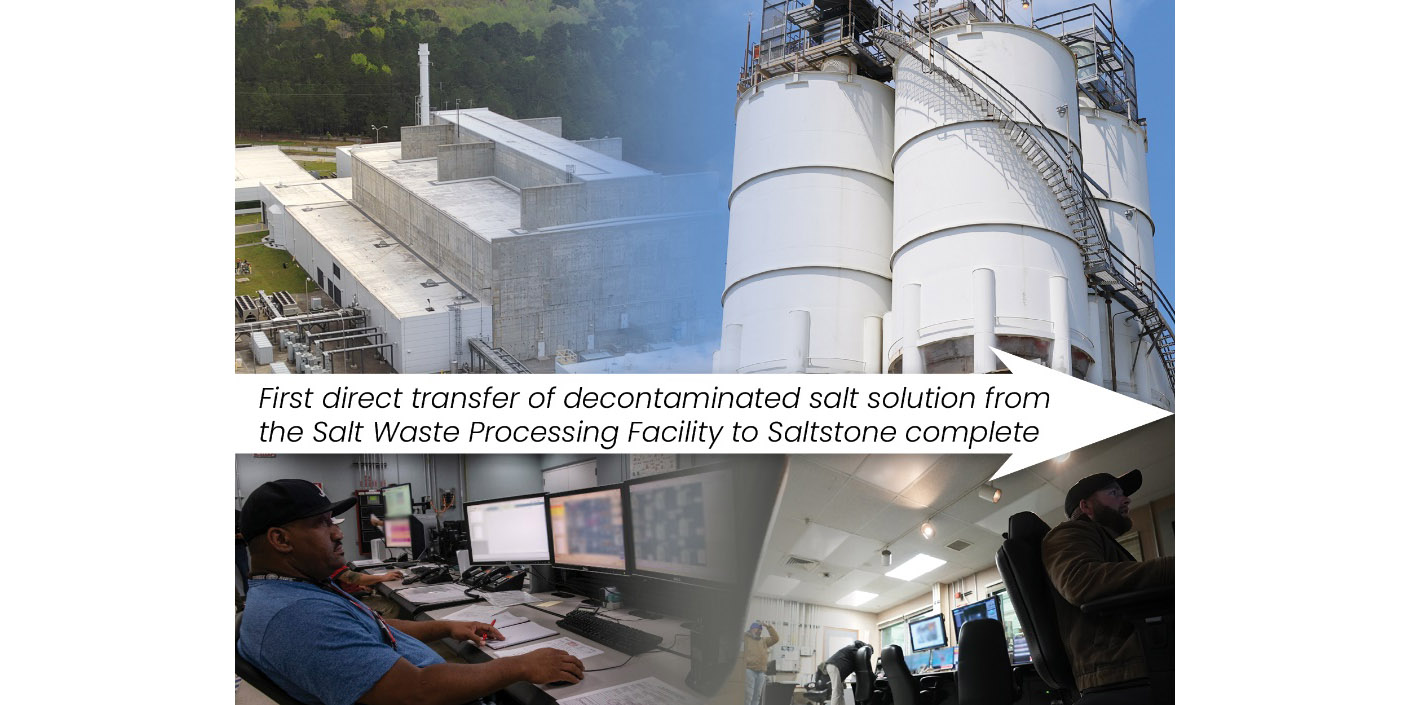How: The contractor, Savannah River Mission Completion, streamlined the transfer process by directly routing the waste from one processing facility to the other, bypassing a holding tank in H Tank Farm, one of two groups of underground waste tanks at SRS.
The SWPF separates and concentrates the highly radioactive waste components found in the SRS tank farms—such as uranium, plutonium, and cesium—from the less radioactive salt solution.
Down the line: The concentrated high-activity waste from the SWPF is sent to the site’s Defense Waste Processing Facility to be vitrified into a solid glass form suitable for long-term storage and disposal. The decontaminated salt solution from the SWPF is sent to the SPF, where it is mixed with dry materials to create a grout, which is then poured into saltstone disposal units to harden into a form safe for permanent on-site disposal.
Some history: Previously, the decontaminated salt solution from the SWPF was transferred first to Tank 50 before proceeding to the SPF for final treatment and disposal. At 1.3 million gallons, Tank 50 is one of the site’s larger tanks and has the capacity to hold the throughput of material temporarily when the SPF is not processing.
Tank 50 was initially needed because the SPF operated only four days week, while the SWPF is a 24/7 facility. Without a hold tank between the two areas, transfers would become backlogged throughout the liquid waste system. The SPF has since transitioned to 24/7 operations to support the increased production rate of the decontaminated salt solution from the SWPF.
The SWPF was originally designed to transfer the decontaminated salt solution directly to the SPF, so no physical modifications were required on transfer lines. Programming and procedural changes were made so direct transfers would be possible. The SRMC will maintain the capability to use Tank 50 as a hold tank if needed during times such as facility outages when the SPF cannot accept the decontaminated salt solution.
A good process: Rerouting waste on a direct path between processing facilities simplifies the transfer process and minimizes operational impacts on the liquid waste system, according to Jim Folk, DOE–Savannah River assistant manager for waste disposition.
“EM’s tank waste cleanup mission is moving forward faster and more efficiently now that all liquid waste facilities are operating 24/7,” Folk said. “These facilities work as an integrated system, so it is crucial that management and personnel communicate and coordinate activities to ensure all operations, especially waste transfers between areas, are completed safely and effectively.”
The option to send waste transfers directly from the SWPF to the SPF adds much flexibility to operations, according to Wyatt Clark, SRMC chief operations officer.
“One of SRMC’s primary goals and core values is reliability,” Clark said. “Optimizing waste transfers is just another example that we are ensuring that our systems are robust, reliable, and well equipped to complete the mission for the Department of Energy. Furthermore, this approach reduces the number of transfers between SWPF, Tank 50, and SPF by 50 percent, which is a significant benefit that resulted from the consolidation of Effluent Treatment Facility and SPF staffing.”


